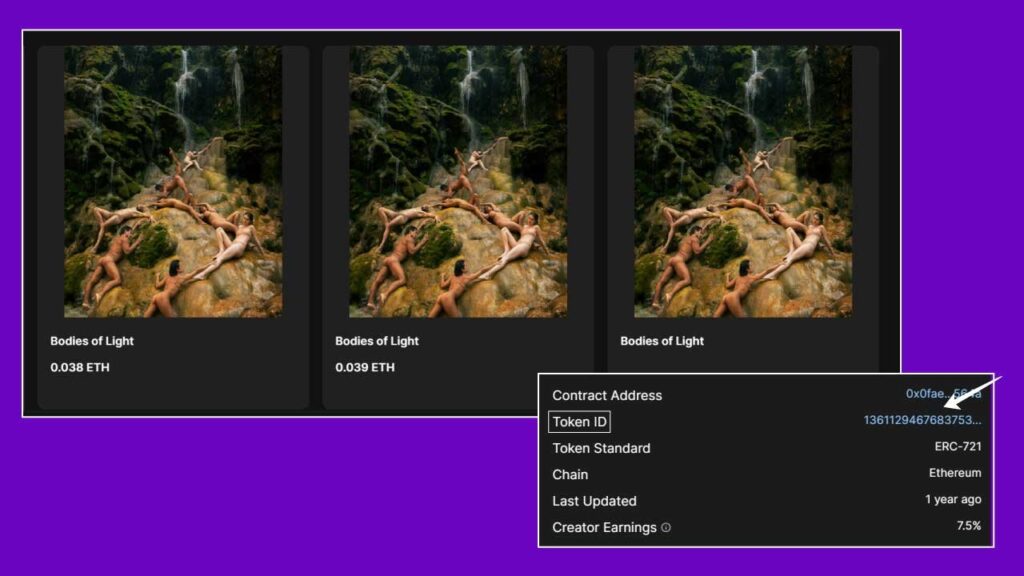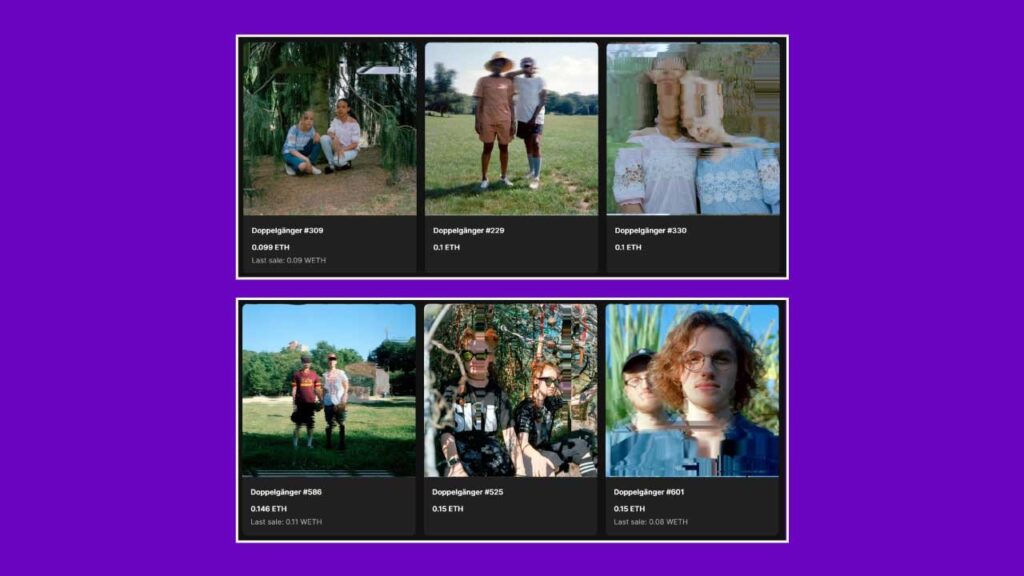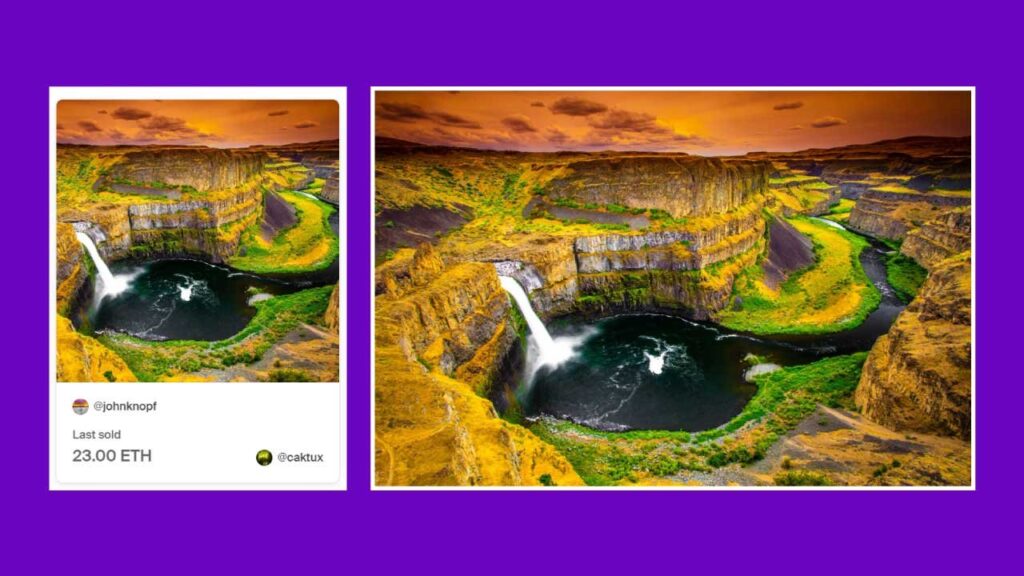In today’s world, where pictures fill our screens and memories are stored digitally, something exciting is happening for photographers and art lovers.
It’s called Photography NFTs.
Basically, it’s taking your regular old photos and turning them into these super unique digital tokens.
So, every photo you snap could potentially become a rare piece of art that people really, really want.
It’s like turning your everyday pics into treasure, thanks to some seriously awesome technology. Let’s dive deep!
NFTs aka Non-Fungible Tokens may sound like a mouthful, but they’re actually pretty straightforward.
Think of them as special digital certificates that prove something is totally one-of-a-kind.
Unlike regular money or cryptocurrencies, which you can exchange for something of equal value (like swapping one dollar bill for another), NFTs are unique.
They’re like those rare baseball cards or limited edition sneakers you’d trade with your friends, but in digital form.
Now, by turning these artworks into NFTs, artists are making them super special and, most importantly, owning them (or even letting someone own, by selling on Marketplaces).
It’s like giving your digital creations their own passport that says, “Hey, I’m the one and only original!”
Photographers are embracing NFTs to give their snapshots a whole new level of coolness. With an NFT, the photo becomes a piece of art that people can collect, trade, and cherish forever.
It’s like turning your photo album into a virtual gallery, where each pic has its own story and value.
Okay, so you might be wondering, how exactly do Photography NFTs work?
Well, it’s all about the power of blockchain technology. Think of blockchain as this super secure digital ledger that records every transaction and keeps things transparent.
Now, when a photographer decides to turn their photo into an NFT, they “mint” it, which basically means they create a unique digital token tied to that specific image.
Once minted, the NFT is stored on the blockchain, giving it a permanent and unchangeable record of ownership.
It’s like having your own digital certificate of authenticity, proving that your photo is the real deal.
Remember how I mentioned earlier that NFTs are non-fungible, meaning they’re one-of-a-kind?
Well, that uniqueness is key. Unlike traditional digital files that can be copied and shared endlessly, each photo NFT is distinct.
It’s like having a digital fingerprint that sets it apart from every other photo out there.
For example, this NFT Photography collection called “Bodies of Light” has 1111 Photo NFTs, and all these NFTs have the same Photos.

But each NFT in the collection will have a different Token ID, which makes each of these NFTs unique.
Note that creators can sell multiple NFTs of the same photo or just a 1-1 photo NFT, depending on their choice.
For example, this NFT Photography Colleciton called Doppelgänger, you can see that each NFT looks different, as the creator decided to go with 1 photo – 1 NFT.

Ok, but what’s this concept of buying an NFT? Why would someone purchase something that can be shared or duplicated online easily?
What are they even gonna do with these Photo NFTs?
First of all, it is worth noting that people have been collecting and selling art all the time throughout history. It’s not something new.
NFTs are just a new form of trading art.
So, why would someone pay a price for just a photo? It’s the very same reason why someone would pay hundreds and thousands of dollars to collect art from their artist.
A Picasso isn’t just an art to someone who wants to collect it. To some, it’s a game of status. To some, it’s the appreciation towards the art that only they can look it in ways you and I would never be able to see it.
But of course, if it’s an NFT, it’s always provable, which makes it easy for collectors to prove the authenticity of it.
And that is why, someone paid around $44,000 for this picture, shot by an Emmy-nominated landscape photographer.

So, why should photographers jump on the NFT bandwagon?
When a photographer creates and mints an NFT of their work, they establish clear ownership rights.
Unlike traditional digital images that can be easily copied and shared without permission, NFTs are unique and verifiable on the blockchain.
This means photographers can prove that they’re the original creators of their photos, protecting their intellectual property and ensuring they get credit for their work.
With NFTs, photographers can earn royalties every time their photos are bought or sold on the secondary market.
This means that even after they’ve sold an NFT, they can continue to make money from future transactions.
It’s like having a digital paycheck that keeps rolling in, rewarding photographers for their creativity and talent.
Copyright infringement is a major concern for photographers, especially in the digital age where images can be easily copied and distributed without permission.
However, with NFTs, photographers have a powerful tool to combat this issue. Because each NFT is tied to a specific image and recorded on the blockchain, it’s easy to prove ownership and track the history of a photo.
This makes it much harder for unauthorized copies to circulate, deterring would-be infringers and protecting photographers’ rights.
Well, let’s do this!
Before diving into the world of NFTs, you’ll need to decide where you want to mint and sell your Photography NFTs. Some popular platforms include:
Once you’ve chosen your platform, it’s time to prepare your photographs for minting as NFTs.
Make sure your photos are high-quality and ready to be uploaded to the platform.
You may also want to consider adding metadata or additional information about your photos to enhance their appeal to potential buyers.
Now comes the exciting part – minting your Photography NFTs! Each platform has its own process for minting NFTs, but it typically involves uploading your photo, adding relevant information (such as title, description, and tags), and setting any desired parameters (such as royalties or unlockable content).
Once your NFT is minted, it will be recorded on the blockchain, establishing its uniqueness and authenticity.
You can do this on a marketplace like OpenSea, with their easy-to-use minting interface. Note minting NFTs will cost a certain amount of gas fee.
With your NFTs minted, it’s time to list them for sale on your chosen platform. You’ll need to set a price for each NFT and decide whether to list it as an auction or a fixed-price sale.
Be sure to include eye-catching visuals and detailed descriptions to attract potential buyers.
By leveraging blockchain technology, photographers can establish ownership rights, earn royalties, and combat copyright infringement.
With the ability to mint and sell NFTs with ease, photographers are poised to redefine the art market and unlock new avenues for creative expression.